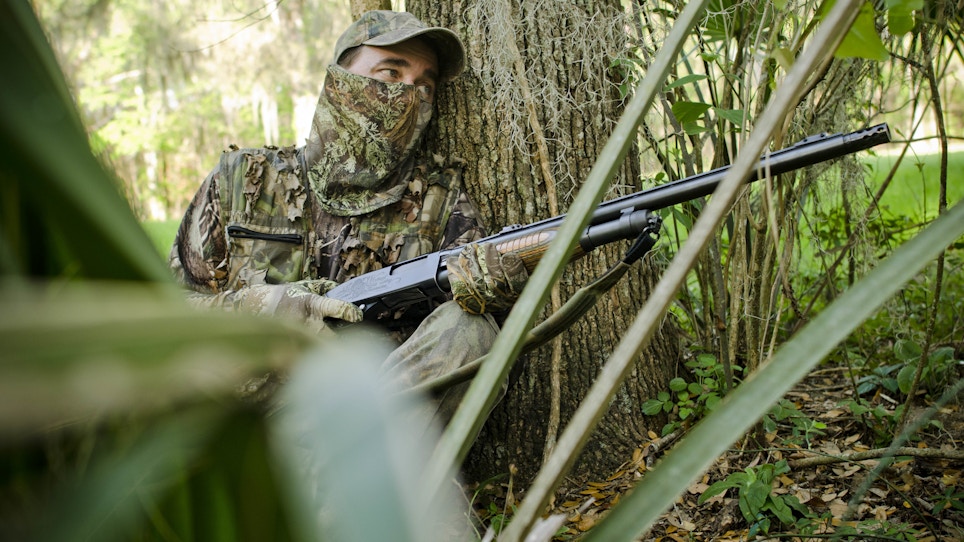Camouflage has come a long way since its major breakthrough in World War II. If you glance back at the history of camouflage, you’ll see that — at least in modern warfare — camouflage became critical when firearms allowed shooters to consistently hit targets at long range. Some of that history dates back to 1898 during the Spanish-American War. American troops wore blue coats, but soon discovered the bright attire was the perfect target for snipers. They quickly smeared the uniforms with mud to “blend” with the background. Can you blame them?
Today you can find a pattern for every environment imaginable. Shopping for a new pattern is half the fun. I’m sure you have your favorites as well and everyone’s top pick varies depending on how they see it and, more importantly, the success they’ve experienced while dressed to kill.
1. Choosing the Right Pattern Camo
When you’re choosing camouflage, moderation is best. It pays to stay away from dark patterns and light patterns except in unique circumstances such as snow camouflage. Dark patterns tend to blob together at a distance and, instead of allowing a hunter to melt into the background, the hunter takes on the appearance of a Sasquatch. Colors that are too light occupy the opposite end of the spectrum. Maybe you washed your camo one too many times or the pattern was printed on material that didn’t hold color. Regardless, a light pattern against a medium backdrop can also make you stand out unless you plan on blending with sky instead of terra firma.
2. Use Camouflage to Disappear Into the Backdrop
Your camouflage was created to blend. To blend appropriately, it needs a backdrop to disappear against. You can’t disappear in a woodland camouflage pattern while up against a horizon on the Pacific Ocean. When a hunter sets up, he should look for vegetation, tree trunks, bushes and even rocky slopes that can aid in accentuating a camouflage purchase. Animals oftentimes wear earth tones for their matching abilities. Fortunately with modern camouflage, you no longer need to hide behind a tree or bush. The patterns allow hunters to set up in front of foliage while merging with the backdrop.
Bonus Tip: But that doesn’t mean you should. Sometimes having blind spots in front of your setup is advantageous, especially if you need to move. A perfectly-placed, tree trunk has given me more than one opportunity to move when a coyote’s head disappeared behind it.
3. Stay in the Shadows
Finally, if at all possible, get out of direct sunlight. Camouflage works in sunlight just as it does in the shadows. Unfortunately, sunlight can cause clothes to shimmer and your gear to glimmer. Again, this can become increasingly obvious if you have to move and the sunlight catches the glint of your eyeglasses. By lurking in the shadows, you minimize the disco-ball effect and increase your freedom to shift without throwing out a sun reflection. If you can’t get out of the sun, create some shade within the pattern by utilizing a Ghillie suit. The overlapping layers add shadows to your form, thus giving you the appearance of native vegetation with ruffled shadows.
Camouflage has come a long way and some military research guarantees it is going a lot further. New leaps in light-bending camouflage means you won’t need to upgrade your suit when you change environments. The suit will act like a chameleon and take on the character of its surroundings. Can you say “Invisible Man?”
Featured image: John Hafner
This article was originally published on April 11, 2016 on grandviewoutdoors.com.






